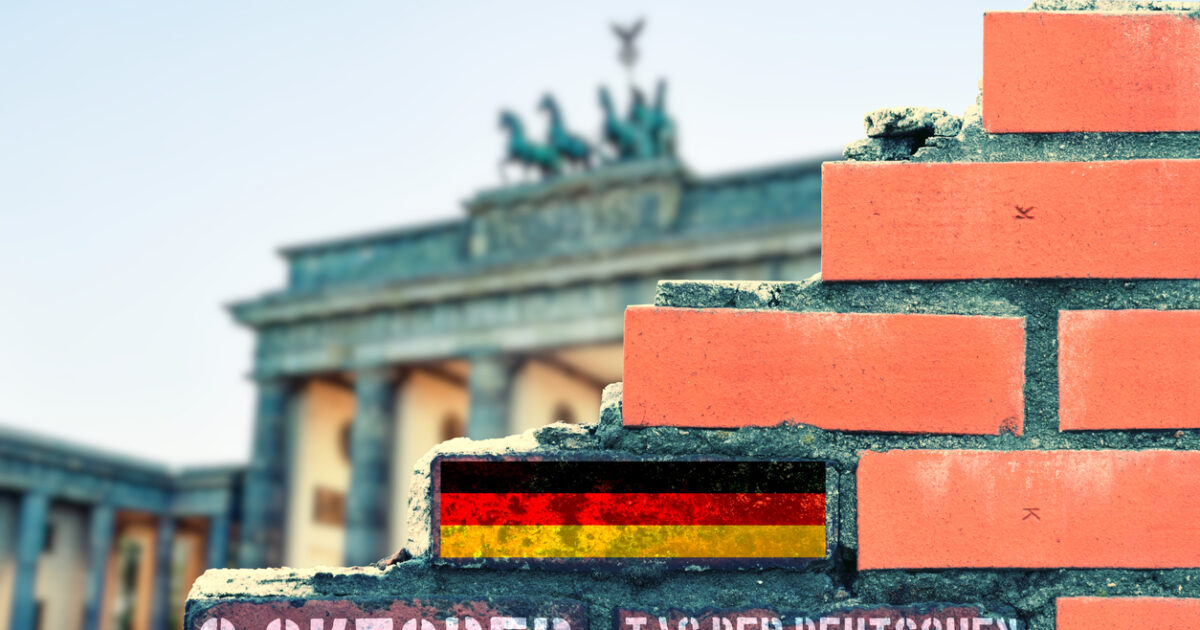The 35 years of reunification celebrated Friday (3.10.2025) or Germanyafter the fall of the Berlin Wall in 1989, amid distrust and political division between the two parties – east and West – Germany. The far -right AfD has evolved into a dominant political force in East Germany, while the West remains liberal and centrally, with economy on both sides to continue to have significant imbalances.
Despite the important steps of progress and the gradual convergence of the two economies, the complete equation has not yet been achieved. According to a new study of Cologne Institute of Economics (IW), The economy of the new federal states has reached approximately 78% of West Germany level. However, in the last five years there has been stagnation in convergence and, more recently, even slightly retreat in the East.
In the central ceremony for the day of the section (3.10.25), the Chancellor Friedrich Mertz He called on the Germans to reconstitute and face the challenges with confidence. “After 35 years of German unity and in a difficult time for our country, we have to look forward with confidence and energy”from Saarbricen.
Mertz emphasized that Germany is at a historically decisive turning point amid new international alliances of authoritarian regimes, digital revolution and changes in the world economy. It called on reforms to enhance economic power, reduce state protection and reform of the welfare state to support those who really need it.
“Much has to change if we want to stay what we have achieved. Germany must continue to be a democratic, constitutional, economically strong, socially responsible and European country, “ The Chancellor stressed.
Wages are increasing faster in the East – but the productivity gap remains
Since 2007, wages in eastern Germany have increased by about 79%, while in West Germany by 61%according to the Institute of Economic Research of Halle (IWH). This shows that salaries in the East increase significantly faster than in the West.
In the early 1990s, wage level per capita in East Germany only corresponded to 60% that of the West – today has almost reached the 90%. Despite the slight slowdown in the coverage rate in recent years-due to special phenomena such as the COVID-19 pandemic, which temporarily reduced incomes in the West-the long-term trend remains positive.
However, income differences are still explained mainly by her lower average productivity of the Eastern business and the historical wealth advantage of West German households. This gap does not indicate reduced employee productivity, but reflects the largest concentration of large companies and investment in research and development in the West.
Important role in reducing the gap plays and the welfare systemwhich has contributed substantially to the balance of income. “The gap between the East and the West does not grow – has been significantly reduced and the long -term tendency shows further convergence”, emphasizes IWH’s researcher Steffen Müller.
Economic inequalities between the states
Even 35 years after reunion, Economic and financial inequalities between states remainingn, although they no longer manifest exclusively on the East-West Axis. As two recent studies show his German Institute of Economic Research (DIW), the eastern states have now reached the west west. However the richest states continue to expand their leadintensifying the gap with the poorest.
The fiscal equation system remains a key tool for reducing regional inequalities: rich states such as Bavaria, Baden-Virtemberg, Hesse and Hamburg They carry significant resources to the poorest, and additional funds are provided by the federal government.
Eastern states are still beneficiaries, but also some west, such as Sugar and the Lower saxityare now one of the economically weaker. At the same time, economically powerful states have benefited from mass immigration from the east after reunification, but at the same time complain about high Poros transport obligationsn.
